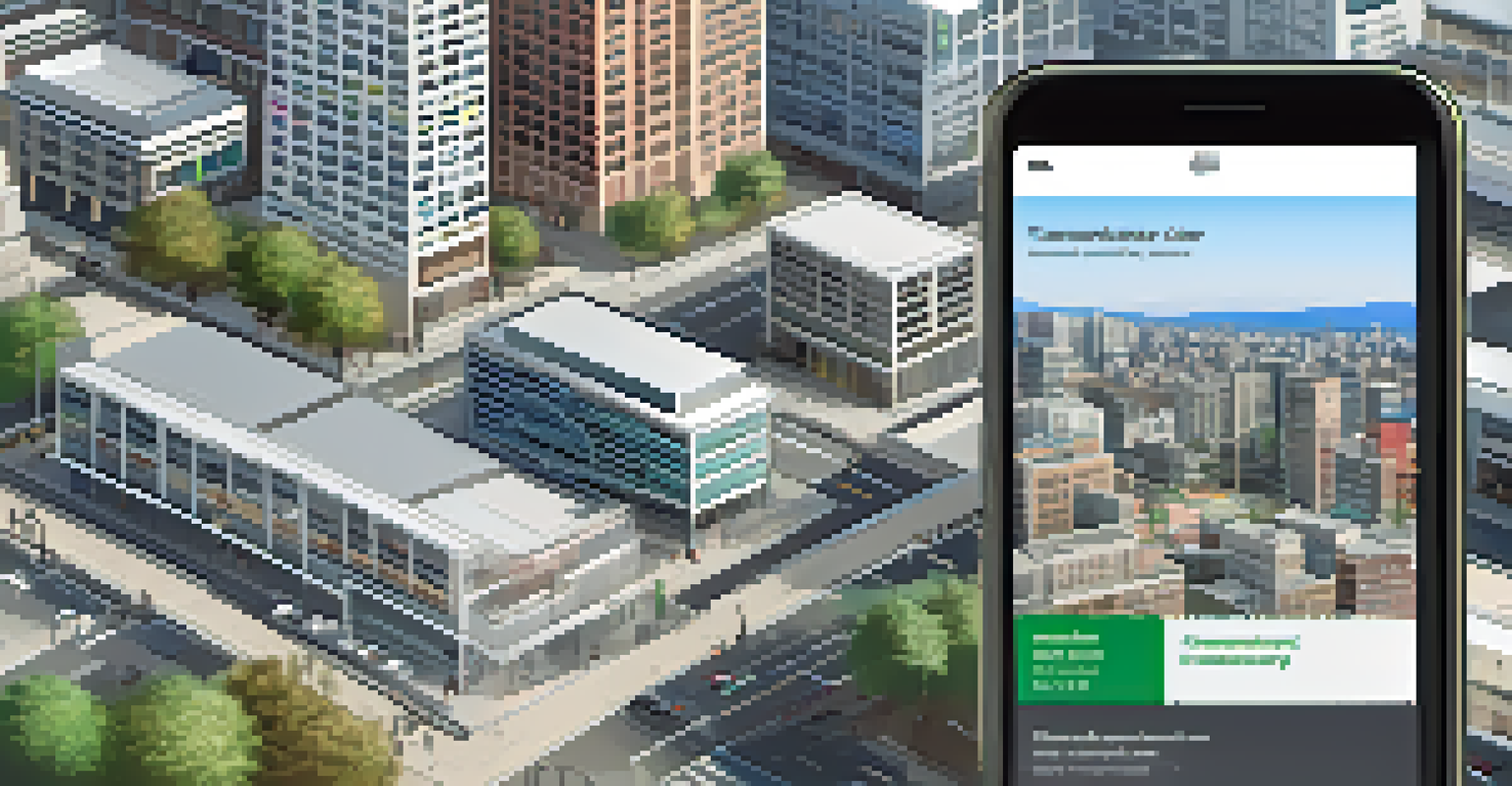The Role of Community Engagement in Santa Monica's Planning

Understanding Community Engagement in Urban Planning
Community engagement is a vital aspect of urban planning, particularly in lively places like Santa Monica. It involves the active participation of residents in decision-making processes that affect their neighborhoods. By fostering a collaborative environment, planners can gather diverse perspectives that reflect the community's needs and desires.
The best way to predict the future is to create it.
In Santa Monica, this engagement often takes the form of town hall meetings, surveys, and workshops. These avenues provide a platform for residents to voice their opinions and contribute ideas. The result is a planning process that is not only inclusive but also responsive to the unique characteristics of the community.
Ultimately, community engagement ensures that the planning outcomes serve the public interest, creating spaces that residents are proud to call home. It's about building a sense of ownership and connection between people and their environment.
The Impact of Community Feedback on Planning Decisions
Feedback from the community plays a crucial role in shaping planning decisions in Santa Monica. By collecting insights from residents, city planners can identify the most pressing issues and opportunities for improvement. This feedback loop ensures that projects align with the community's vision and priorities.

For example, when planning new parks or public spaces, input from local residents can highlight specific desires, such as playground equipment or walking paths. Such information is invaluable in creating spaces that cater to the needs of all age groups and enhance quality of life.
Community Voices Shape Urban Planning
Active participation from residents ensures that urban planning reflects the unique needs and desires of the community.
Moreover, when community feedback is integrated into planning, it fosters trust between residents and city officials. This trust encourages ongoing participation and sets the stage for successful long-term collaborations.
Case Studies: Successful Community Engagement in Action
Looking at successful case studies can illuminate the effectiveness of community engagement in Santa Monica. One notable example is the development of the Santa Monica Pier. Through extensive community input, planners were able to redesign the space to enhance public enjoyment while preserving its historical significance.
Community engagement is about creating spaces where people feel empowered to share their voices and contribute to the common good.
Another example is the city's recent efforts to improve public transportation. Residents shared their experiences and needs, leading to changes that made routes more accessible and user-friendly. These initiatives showcase how community engagement can lead to tangible improvements in urban planning.
These success stories serve as a reminder that when communities are involved, the results are often more innovative and beneficial for everyone. They illustrate the power of collaboration in creating spaces that genuinely reflect the community's identity.
Challenges in Community Engagement Efforts
While community engagement is essential, it does come with its challenges. One significant hurdle is ensuring that all voices are heard, especially those from marginalized communities. Often, certain groups may feel overlooked or lack access to engagement opportunities, leading to incomplete feedback.
Additionally, balancing diverse opinions can be tricky. Planners must navigate differing priorities and expectations, which can sometimes lead to conflict. However, addressing these challenges head-on is crucial for fostering a truly inclusive planning process.
Technology Enhances Engagement Efforts
Digital tools and platforms broaden outreach, allowing more residents to contribute their feedback conveniently.
Ultimately, overcoming these obstacles requires commitment, creativity, and a willingness to adapt. By actively seeking out and incorporating diverse perspectives, Santa Monica can enhance its community engagement efforts.
Tools and Techniques for Effective Engagement
To enhance community engagement, Santa Monica employs various tools and techniques designed to make participation easier and more meaningful. Online platforms, such as surveys and social media, allow residents to contribute their thoughts at their convenience. This accessibility is especially important in today's fast-paced world.
In-person workshops and focus groups also play a vital role. These gatherings not only foster dialogue but also encourage relationship-building among participants, creating a sense of community. When residents know their neighbors and feel connected, they are more likely to engage in the planning process.
Furthermore, visual aids such as maps and models can help clarify complex planning concepts. When residents can see proposed changes, it often sparks more informed discussions and feedback.
The Role of Technology in Community Engagement
Technology has revolutionized the way communities engage in planning processes, and Santa Monica is no exception. Digital tools allow for broader outreach, reaching residents who may not attend traditional meetings. This means that more voices are included in shaping the future of the city.
For instance, mobile apps and interactive websites can facilitate real-time feedback on projects. Residents can easily share their thoughts, vote on proposals, or participate in discussions from the comfort of their homes. This flexibility is particularly beneficial for those with busy schedules.
Inclusivity is Key for Effective Planning
Addressing the challenges of diverse opinions and ensuring all voices are heard is crucial for a successful planning process.
Moreover, technology can enhance transparency, allowing the community to track progress and understand how their input is being utilized. This transparency fosters trust, encouraging continued participation and investment in the planning process.
Looking Ahead: Future of Community Engagement in Santa Monica
As Santa Monica continues to evolve, the importance of community engagement will remain paramount. Future planning initiatives will likely incorporate even more innovative strategies to ensure inclusive participation. By embracing new technologies and methodologies, the city can keep pace with the changing needs of its residents.
Moreover, as the community grows and diversifies, ongoing efforts will be necessary to ensure that engagement reaches all segments of the population. This will involve not only adapting existing strategies but also exploring new partnerships with local organizations.

Ultimately, the future of community engagement in Santa Monica hinges on collaboration and openness. By maintaining a commitment to inclusive planning, the city can create a vibrant, thriving community that reflects the values and aspirations of its residents.